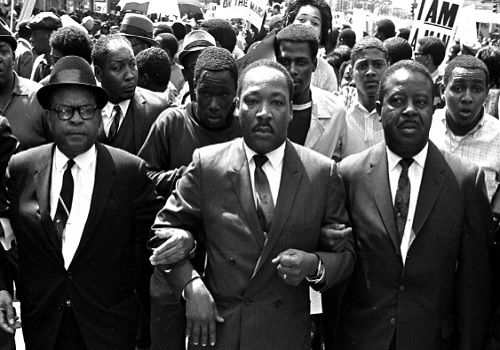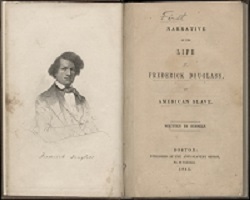Life after the Civil War
When the Civil War ended Harriet Tubman returned home to Auburn, New York. Her parents were old and had a good support system during her absence but they still needed her daughter’s financial support. Her brothers and their families eventually moved from St. Catharine’s to Auburn. Her parents passed away of old age. Her father died in 1871 and her mother in 1880.
Tubman was a philanthropist who provided to those who sought her help. She left the door of her residence, at South Street , open for those who needed shelter and food. For years freed slaves came and left when they were ready to move on. She took care of all their needs even though she was penniless. She supported herself and those she sheltered by selling produce from her garden, taking in donations of food and asking friends for loans. She also raised pigs in her backyard.
Marriage
In 1867 Tubman received the news of the death of her former husband, John Tubman. He had been killed in an altercation with a white man named Robert Vincent. He was never convicted. Harriet was never formally married to John, theirs was an informal marriage just like all others who lived in slavery.
In 1869 Tubman met Nelson Davis, a man who had looked for shelter in her home. He had been a slave in North Carolina and served as a soldier in the Civil War. Davis was a brick maker. Tubman and Davis married on March 18, 1869 at the Presbyterian Church in Auburn. In 1874 they adopted a girl who they named Gertie. Davis suffered from Tuberculosis and could not hold a steady job, leaving Harriet responsible for the household. Their marriage lasted 20 years. Davis died in 1888 probably from Tuberculosis.
Compensation for Civil War Services
When Harriet returned to Auburn she applied for government compensation for her services during the Civil War but her application lacked the official documents. With the help of some friends she was able to appeal but took more than 30 years to succeed. Her friends found out about her financial needs and community leaders wrote letters to newspapers advocating her case, Tubman deserved a government pension.
When her second husband, Nelson Davis, died in 1888 Tubman was able to collect a veteran’s widow pension of $8 a month. It was the first time she enjoyed a reliable and steady income.
Women’s Rights Movement
Tubman supported the Women’s Rights Movement by attending meetings and giving speeches. Friends who had supported her during her Underground Railroad years were leaders of the movement. She toured New York, Boston and Philadelphia speaking in favor of women’s suffrage rights. She was specially interested in African American women’s rights. In 1896 she was invited as a speaker at the first meeting of the National Association of Colored Women. Read more about Harriet Tubman’s involvement in the Women’s Rights Movement.
First biography by Sarah Bradford
Friends sponsored the publication of her first authorized biography written by author Sarah Bradford. The objective was to furnish financial help since her Government pension was not authorized. All the proceeds of the sale of the book went directly to Tubman to help with payments of her mortgage and the support of her older parents. In addition to interviews with Tubman, the biography included stories and letters from prominent government officials and former abolitionists such as Frederick Douglass, Gerrit Smith, William Seaward and Wendell Phillips. Printing and advertising costs were covered by donors. The book, Scenes in the Life of Harriet Tubman was published in 1869 and raised $1,200 in revenues which went directly to Tubman.
A second biography was published in 1886 called Harriet, the Moses of her People. As with the first biography, this one was also published to help Harriet’s financial situation.
The gold scam
In 1873 her financial needs were pressing and she became a victim of a scam. Two men approached her and her brother, John Stewart, and proposed to give them a trunk full of gold worth $5000 in exchange for $2000 in greenbacks, the paper currency used during the Civil War. According to the con men they had found the gold buried away. Harriet knew that white slaveholders in the south had hidden away valuables and it was the slaves who would dig holes in the ground to hide away their possessions. The story did not sound so farfetched so she approached Anthony Shimmer who provided her with $2000. In exchange she would return the $2000 in gold coins which would provide a good margin for the investment.
The exchange was planned to take place at night in the woods. The con men were able to separate Harriet from her brother and husband. She was then knocked down and injured and the money was taken away. The two men were never found.
Harriet Tubman Home for the Elderly
Tubman showed special concern for the old. Few social services were available to them and they were too old to make a living. In 1896 Tubman acquired in auction 25 acres of land adjacent to her property, located at 130 South Street. With money raised by the AME Zion Church and with the support of a local bank, Harriet was able to afford such an acquisition. Her dream was to build a house for the aged colored people. Her winning bid was $1450.
In 1903 she decided to donate the property to the AME Zion Church with the condition that it would be maintained as a home for the elderly. The Board of the Lady Managers helped raise funds to equip and staff the home. It took five years for Tubman’s dream to realize. On June 23, 1908 Harriet Tubman Home was inaugurated with Tubman as the guest of honor in the opening celebration.
Following her hospitalization in 1911 she moved out of her house and into the care of the facility next door where she was to spend the rest of her life.
Category: Biography, Later Years and Death





